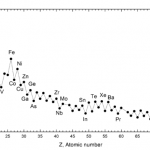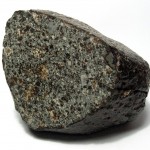It can be hard keeping up with the differences between planets, comets, asteroids, and meteroids--especially when many people use the terms interchangeably. This list quickly distinguishes between these objects while providing a map (not to scale!) of the relative locations of the planets and other noteworthy cosmic features.
Remember the order of the planets using the mnemonic M-VEM-J-SUN (see image below). The Asteroid Belt comes after Mars, as does the dwarf planet Ceres; you can remember this by thinking ABC. The Kuiper belt falls after Neptune (spanning 30-55 AU [the distance from the sun to the earth] from the sun), followed by the Oort cloud (home of comets and stretching a whopping 55-50,000 AU from the sun); think KO (as in "knock-out") to recall the order. The dwarf planets Pluto and Eris inhabit the Kuiper belt.
Star:
1) luminosity
2) high surface temperature
Planet:
1) orbits sun
2) nearly spherical
3) cleared its orbit -- this is what knocks Pluto off the list
Dwarf Planet:
1) orbits sun
2) nearly spherical
3) has NOT cleared its orbit
4) not a moon
Moon:
1) orbits a planet or dwarf planet
Comet:
1) contain volatiles such as water
2) also contains rock dust in ice, making it a "dirty snowball" of sorts
3) features two tails: a plasma tail that faces away from the sun, and a dust tail that faces opposite the direction of the comet's movement
4) often from Oort cloud
Asteroid:
1) rocky
2) undifferentiated
3) between 0.1 - 600 km long
4) irregularly shaped
Meteoroid: comet/asteroid/planet fragment (less than 10 m long) in space
↓
Meteor: when the fragment is burning in earth's atmosphere; most are dust-sized
↓
Meteorite: after the fragment hits earth's surface
You can remember the meteoroid-meteor-meteorite order by recalling that asteroids are in space, so meteroids are also in space. The phrase "meteor showers" refers to the light show, indicating that a meteor is burning in the earth's atmosphere. Finally, many rock names end in -ite (diorite, for example), which can aid in recalling that meteorites have landed on the earth's surface.







